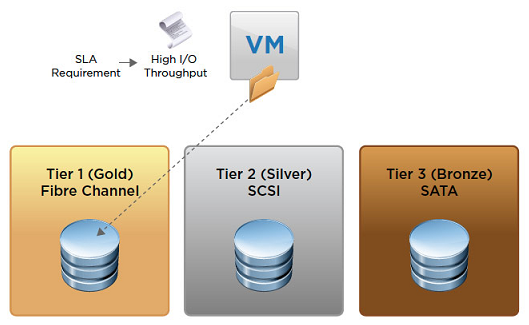Using storage capability and policy-driven storage
It is always a cumbersome task to manage datastores and match the SLA requirements of VMs with the appropriate datastore. vSphere 5.0 introduced profile-driven storage, which allows you to have rapid and intelligent placement of VMs based on SLA, availability, performance, or other requirements, and provided storage capabilities. It was later reintroduced in vSphere 6.x and beyond as VM Storage Policies.
You can request various storage characteristics, typically defined as a tier, in a VM storage policy using policy-driven storage. These policies are used during provisioning, cloning, and storage vMotion to ensure that only those datastores or datastore clusters that are compliant with the VM storage .

Policy-driven storage is achieved by using two key components: storage capabilities and VM storage policies.
Storage capability outlines the quality of service that a storage system can deliver. It is a guarantee that the storage system can provide...




































































